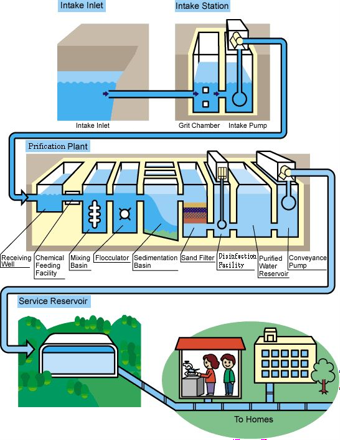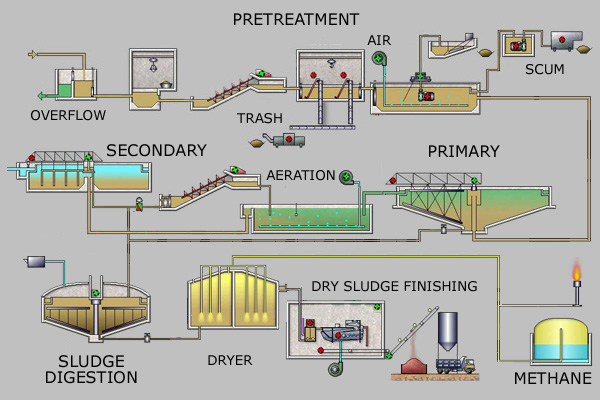Part one: Conventional water treatment
Turning on a faucet at home is like opening a dam on a small river. Water comes from a pumping station which has extracted it from a well (ground water) or a lake (surface water). Through advanced processes, all solids and unwanted dissolved substances such as organics (humic acids, colours) and certain ions (iron, manganese, nitrate) were removed. Finally, the water got disinfected with chlorine or ozone to kill the microorganisms and make it safe for drinking, and then it was sent under pressure to our homes through kilometers of pipes. All inhabitants share the same source. The price you pay for water treated by these processes is about EUR 1,5 per m³ in the Netherlands.

An inhabitant of the aforementioned country uses about 120 liters of drinking water per day at home, in the USA the stats say it’s up to 400 liters per day. Calling it “drinking water” is a little bit ironic, since maybe 3 liters of this water at most is used for drinking. The remaining volume is used to flush the toilets, wash the clothes and dishes, take showers and bathe, and in some cases, also water the plants in the garden. This is how we treat H2O, a precious natural resource and the essential element for life.
You could with confidence call it “cleaning water” instead.
After you use the water for the purpose you needed: flushing, cooking, showering, it goes down the drain into a central sewer where it meets with the waste from your neighbour, from the famous actors and rich businessmen inhabiting your town, and flows all the way to the waste water treatment plant. This once pristine water is now turbid, foul-smelling and contains solids and dissolved compounds. The treatment plant ensures that all the dirt gets removed by similarly advanced processes as were used before.
First, the large solids (wrappers, diapers, dead animals, sanitary towels) are strained and dumped in a truck and brought to landfill. Then the water flows on to a bioreactor where it meets bacterial mass (sludge) and air. The “conventional activated sludge process” is the most widespread way of waste water treatment. This process ensures the removal of organic – (“C”carbon based) substances from water and to some extent also “nutrients” such as nitrogen – (“N”such as ammonia) and phosphorus (“P” such as orthophosphate). Removal of C, O and P is important because if released in large amounts into our rivers, which is where most off-water ends up, they will cause total degradation of the water quality and turn the water into a brown-green swamp. The classical example is the “Great Stink” in the 19th century London. After bacteria do their work, water is separated from the sludge in large circular clarifiers and sent to a river. For this process, you pay about EUR 0,5 for m³ of water.

Thus, to take a shower, water must flow from a purifying station, through several kilometers of pipes to your house and through several kilometers of sewer to reach the treatment plant. You are in the midst of your very private river. Seems like a long journey to me. Plus, the processes are costly and surprisingly energy demanding.
Sinking cities
Centralised extraction of ground water and release of treated water into the surface streams does bear some additional serious consequences. If water is pumped up from the ground and is not replenished, the ground will start sinking in. This is a well-documented process and affects large metropolises like Jakarta, Bangkok and Shanghai. With the prospect of sea level rising, this seems like even worse news. Mexico City is sinking at a rate of almost a meter per year, which puts a lot of pressure on the infrastructure and causes buildings to lean. (Watch the video)
So, our thirst asks for energy demanding processes and causes our cities to sink. Can we stop this? Can we go about better with water? In the next blog, we will propose a solution and why this might be a particularly good idea for the warm countries of South East Asia. Subscribe to stay up to date.
